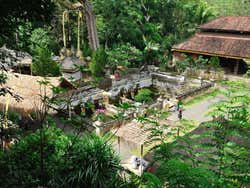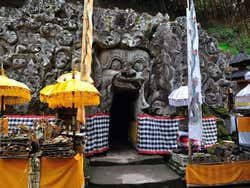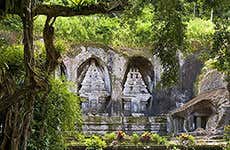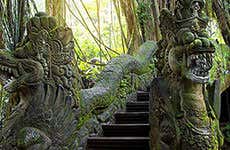
Goa Gajah
Enter the mouth of a demon and explore the Elephant Cave where you'll discover an ancient religious sanctuary.
Although the exact origins of the cave are unknown, Goa Gajah is thought to have been built between the 9th and 11th centuries and to have served as a spiritual sanctuary. There are also different theories about why it is named the Elephant Cave; the demon face carved into the entrance of the cave whose mouth gives way to its interior has been interpreted as an elephant, although some believe it is to do with the statue inside of the Hindu God Ganesh (who has the head of an elephant). Others believe it is named after the nearby Petanu River, which was once known as Elephant River.
Inside the cave, symbolism from both Hinduism and Buddhism can be found and outside are bathing pools that were only excavated in the 1950s! From the cave you can also head down through the rice fields to Sungai Petanu, where there are ruins of stupas and a small cave.


Schedule
Every day: 8 am - 5 pm.
Price
Adults: 50 IDR (US$ 0).
Children ages 5-11: 25 IDR (US$ 0).
Ubud, Goa Gajah & Central Bali Private Tour 687,500 IDR (US$ 41.39)
Transport
Taxi or hire car.
Nearby places
Ubud (3 km) Monkey Forest (3.2 km) Taman Gili (12.8 km) Taman Ayun Temple (12.9 km) Gunung Kawi Temple (13.1 km)

